Rotating Snakes Study
A private side project by Marcel Padilla - Spring 2024
Abstract
I was very impressed by Akiyoshi Kitaoka's rotating snakes illusion and needed an extremely high-res version for large printing. After experimenting with more ideas, I ended up with a color-controlled version with a Möbius inverted Doyle spiral and an Apollonian gasket style fractal construction.
Snake Elements
I started by constructing a simple element using two colors from the HSV color wheel. Each snake element has two colors with a constant hue shift. However, the illusion’s effectiveness varies due to the different luminances of the colors.
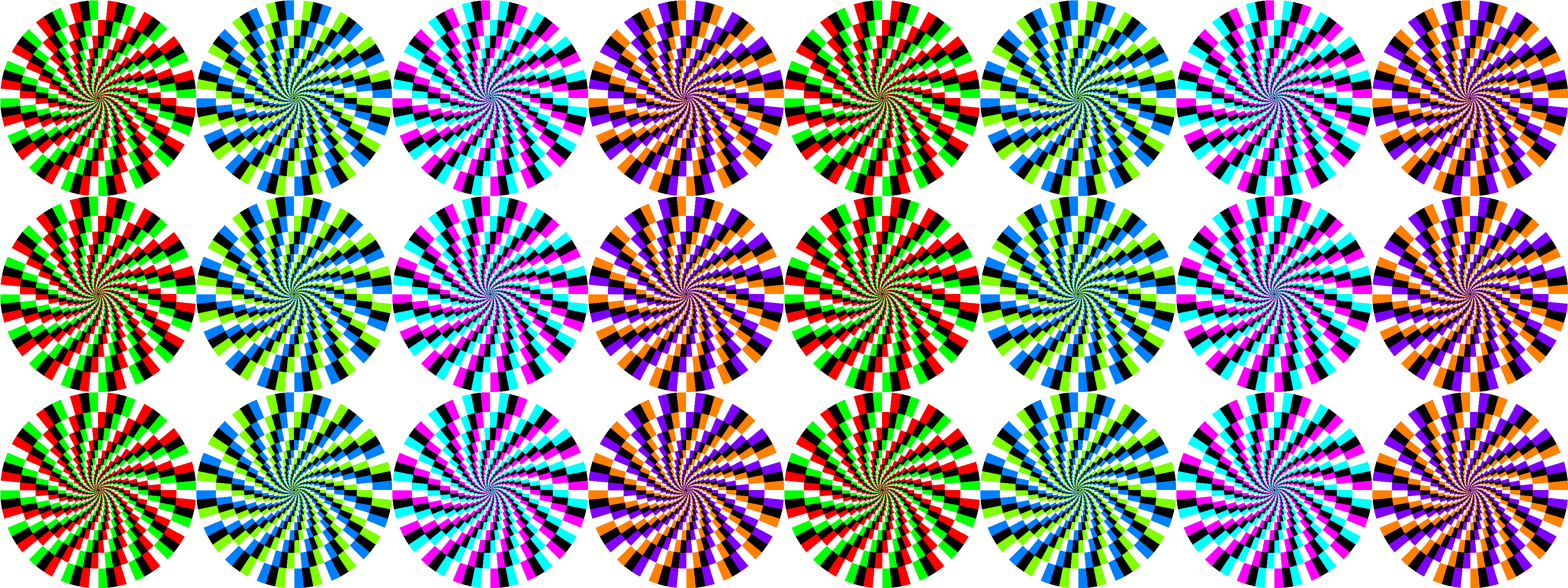
Basic snake elements.
Color Control
Lea Atala-Gérard and Michael Bach’s work on the rotating snakes illusion shows that the illusion is driven by luminance. I built a computational map to optimize the colors for the strongest illusion effects based on their findings.
The white line indicates 60% luminance, and the black line 20% luminance—these are the colors required for maximal optical illusion effects.
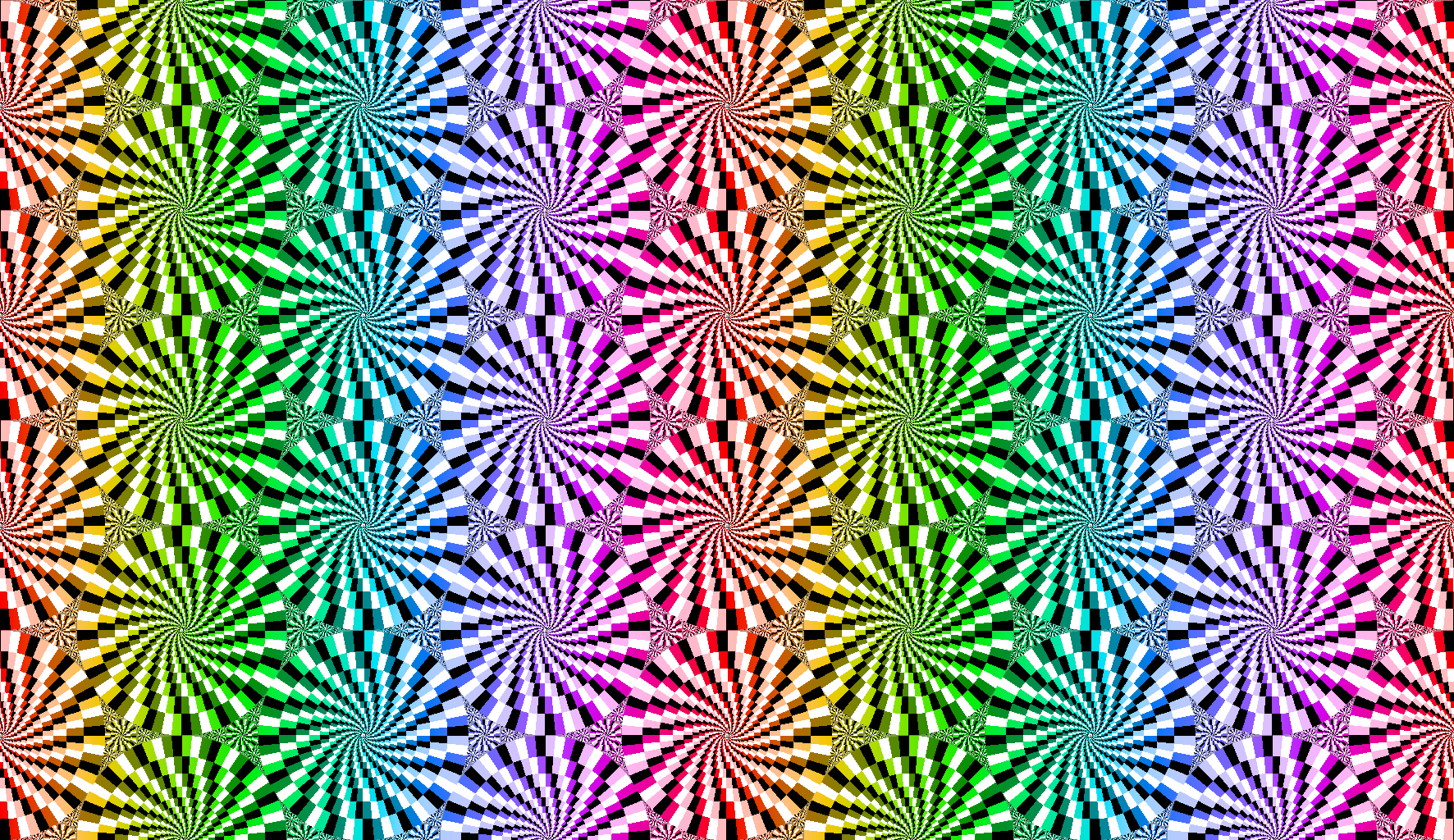
Snake elements with optimized luminance arranged in a hexagonal lattice.
Arrangements
Any circle packing can be used for this, though I chose a Doyle spiral mapped through a conformal Möbius mapping.
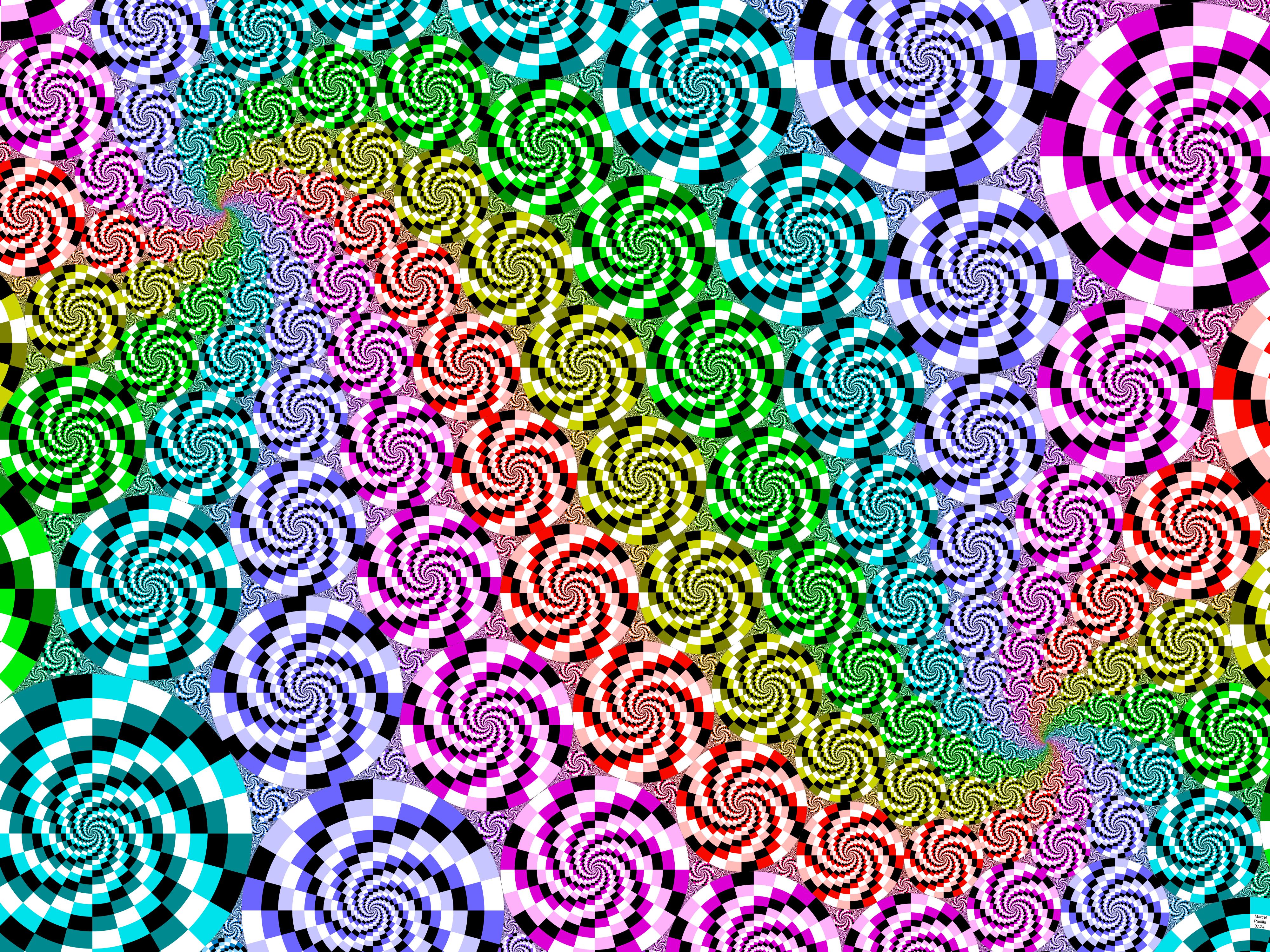
A Doyle spiral mapped by a (conformal) Möbius map.
To fill in the gaps, I used Apollonian gasket style fractal packing, adding a circle between every triplet of touching circles recursively for a few generations.
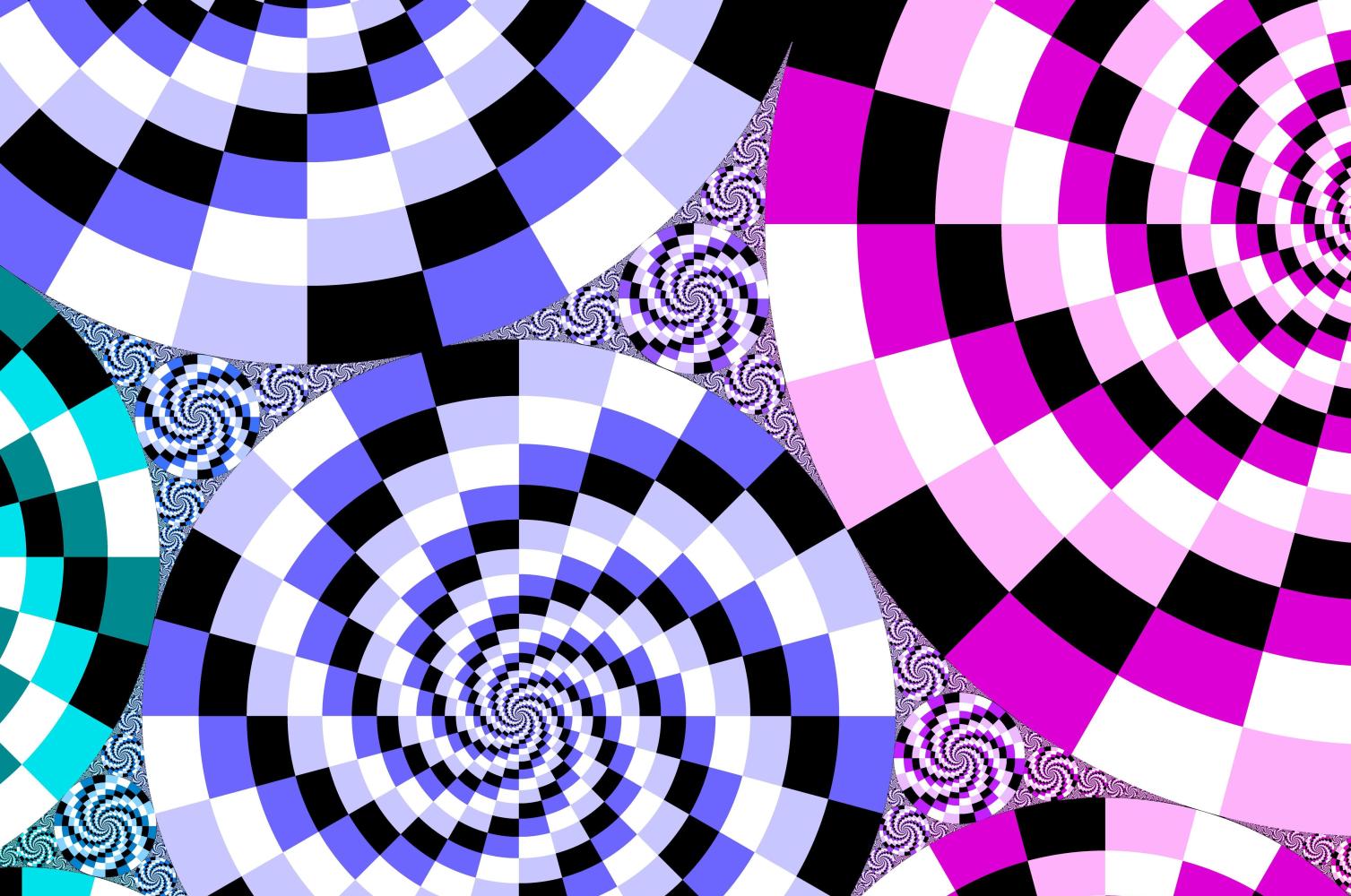
Apollonian gasket style fractal packing.
Variations
By altering parameters such as the number of "spokes" and thickness of the layers, I created several variations that adjust the twist and detail of the illusion.
.jpg)
.jpg)
Various snake element arrangements with different levels of twist.
Why?
For fun—and I wanted some unique decoration.
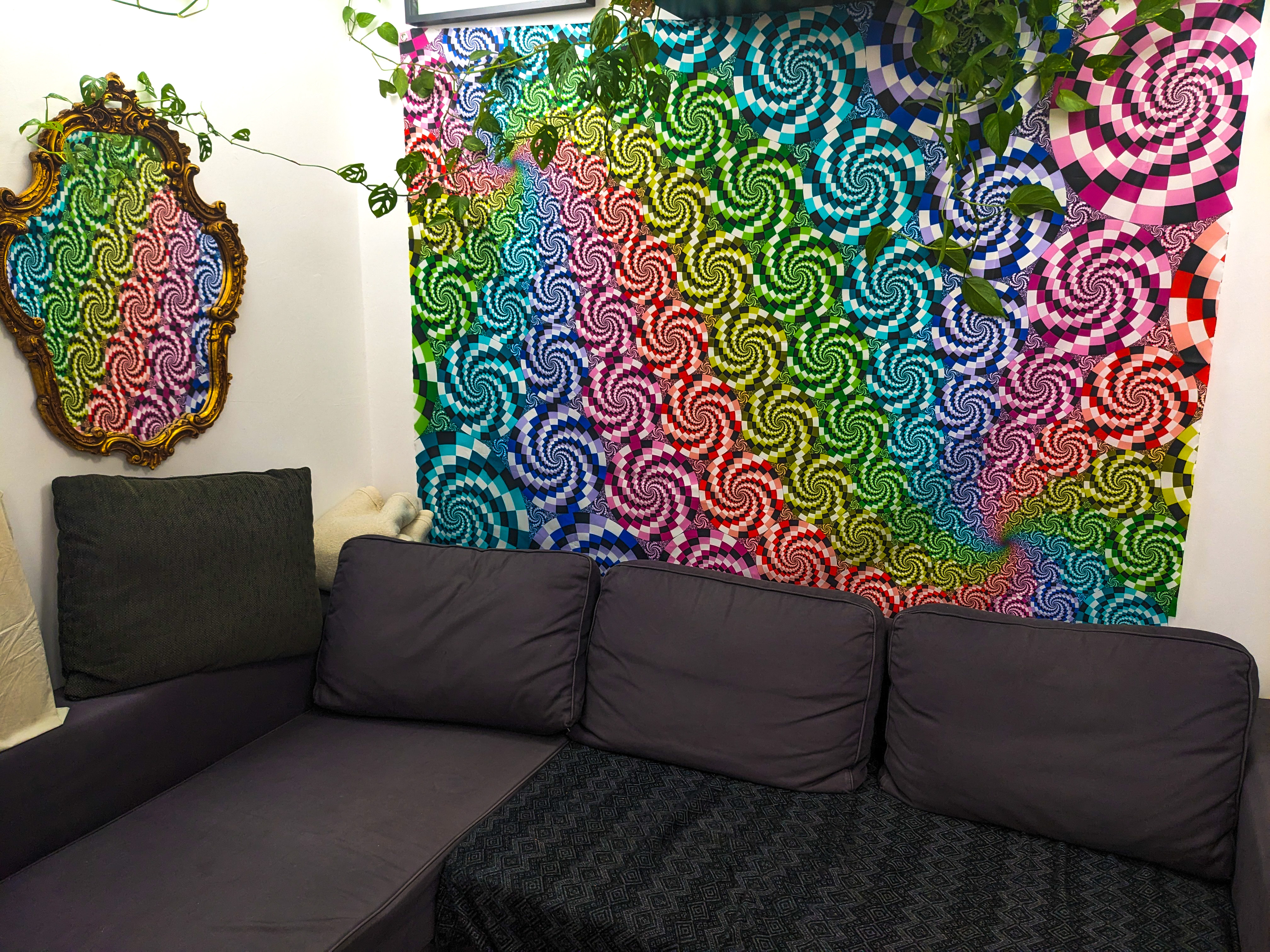
Printed on nylon fabric.
About Copyright
Do what you want!
BibTeX
@article{padilla_rotating_snakes_study,
author = {Marcel Padilla},
title = {Rotating Snakes Study},
year = {2024},
url = {https://marcelpadilla.com/Projects/Rotating_Snakes_Study/},
}